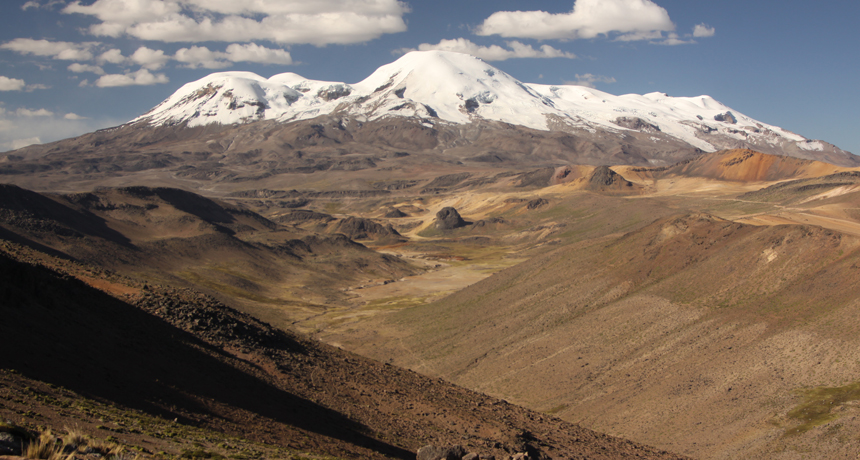Ice Age hunter-gatherers lived at extreme altitudes
Sites in the Peruvian Andes indicate early Americans adapted quickly to high life

INTO THIN AIR After finding two Ice Age archaeological sites in the Peruvian Andes, near the volcano Nevado Coropuna (shown), researchers have determined hunter-gatherers inhabited extreme high altitudes earlier than thought.
Kurt Rademaker







